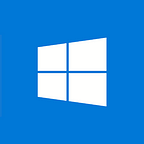Throwing out application success to think bigger
How Affinity Designer developers went from having to win over customers to winning a Windows Developer Award
The secret to a successful application is elusive, so why would a company scrap a popular product and focus on something completely new? That’s the situation developer Mark Ingram found himself in when his company, Serif, decided to stop releasing iterations of its beloved range of graphics, photo, and desktop publishing software and, instead, put its resources elsewhere.
Elsewhere, in this case, was Affinity Designer, a graphics design program aimed at professionals. The risk of such change was magnified by bumps at the beginning, but now, it’s a critically-acclaimed piece of software that recently won a Windows Developer Award for “Application Creator of the Year.”
Winning criteria dictated that the application had to explore the latest Windows 10 features and capabilities, push the envelope, and set a new bar for what’s possible for developing on the Windows 10 platform.
Winning over an reluctant customer
Mark is thrilled at the win, but notes that early customer feedback for Affinity Designer wasn’t promising.
“At first they didn’t understand what was going on,” he admits. “They didn’t get why we’d abandoned our ‘Plus’ range of software that had existed for more than 10 years. They didn’t understand why we weren’t just bringing out a new version of that.”
But Serif, which specializes in Windows software development, was thinking bigger. Instead of just home users, the new software was aimed with a higher standard at graphic design professionals. This meant completely rewriting the code to support the vision that Serif head of development, Tony Brightman, laid out when presenting the product idea. He wanted Affinity Designer to be the most precise vector design software on the market.
“To adapt to modern hardware architecture, we basically had to start again from scratch,” Mark says. “Our old software was never designed to be cross-platform. There was no way we could write Affinity based on the old source code. Some of the customers struggled with the change at first, but many have come over now, and they’re very happy.”
Whether for work or fun, the application revolutionizes the creation of everything from marketing materials and websites, to icons and UI. Features and functionality include real-time performance, perfect color and output, and multiple disciplines.
To gauge the user experience, Mark and his fellow developers spent (and still do) a great deal of time on the company’s forums, seeing what their customers are saying. The team launched Affinity Designer in a public beta for six months, so that anyone could start using it and give feedback. That effectively shaped the product into its current, award-winning guise — without that valuable input, according to Mark, Affinity Designer would have been a very different proposition.
A developer’s work is never done
This notion that the job is never really finished — that you have to continually innovate to stay top of your game — has been honed over a lifetime of programming. “I’ve been using computers as far back as I can remember,” says Mark.
He started on an Acorn Electron that his father bought him. “He used to take me to the library each week to get a new book out, and I would type in the code from the book to try and get it to run and make little games and things. As I got older, I never stopped being interested in computers, I just graduated to different programming languages — QBasic, C++, and so on. It’s always something that’s interested and excited me.”
And that excitement persists. “Even now, I never get bored of doing this,” he says. “It’s a lifelong thing. It’s how my brain works. I enjoy the puzzle factor behind programming. It’s incredibly challenging but very rewarding as well.”
Mark has been at Serif for 10 years now. It’s a small team — based in Nottingham, in the UK — which lets the company be agile and respond quickly to customer feedback. It also means the developers have to be skilled in multiple disciplines — an approach he describes as “all hands to the pumps.”
So where does this passion about his work come from? “It’s a personal thing,” he says. “It’s an attachment I have with the products. I don’t want the products to reflect badly on me or the rest of the team. I take it personally. So I make sure they’re as good as can be. The other developers here are the same. It’s certainly not a job or a chore to work on these apps.”
Being such a small team makes the Windows Developer Award mean so much more.
“We’re just a little company in Nottingham,” Mark says. “To be recognized by one of the giants of the tech industry is something we never dreamed of. Just being in the same room as all the Microsoft execs, and them saying complimentary things about our app was humbling to the extreme. One guy got his tablet out and started showing us some photos he’d edited using our software. It was incredible.”
